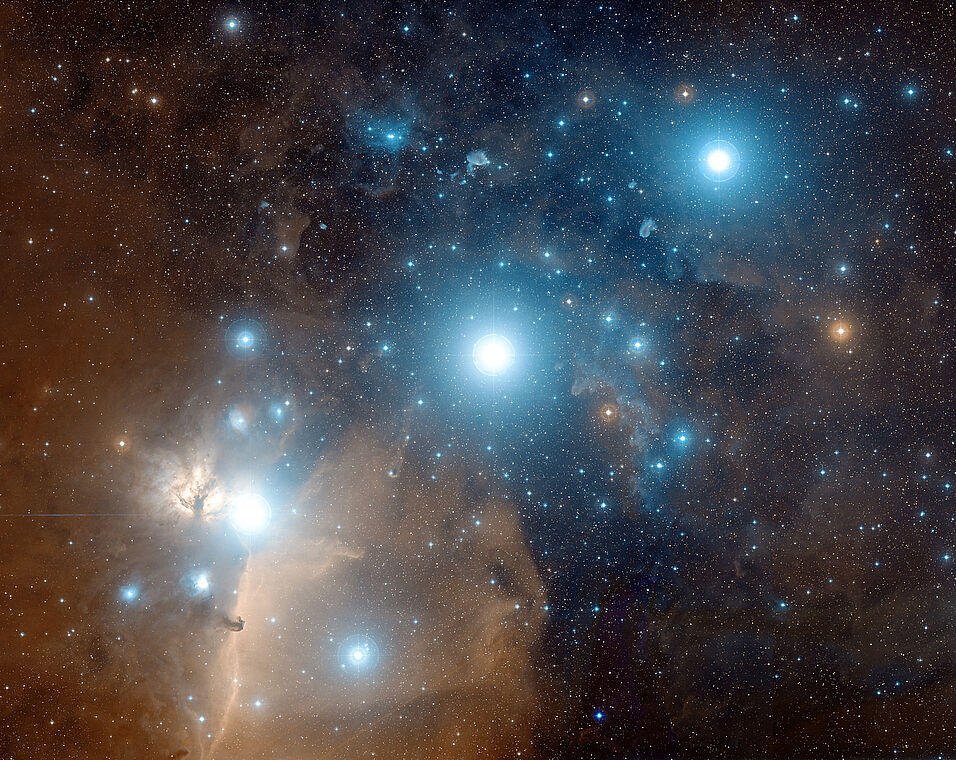Karolina Kubiak |
07.04.2017 18:30
Although among the hundred closest stars we will not find any of spectral type B, in a group of one hundred brightest stars in the night's sky they represent the third part. Without B-type stars, it would be difficult to recognise many areas of the sky. The Southern Cross (depleted of alpha and beta Cru) vanished, from 16 bright stars of Scorpio remained only 6. There would be no Pleiades because their brightest stars (the classic "seven sisters") are also mainly spectral type B. And from the outline of Orion would have remained Betelgeuse and the Belt composed of only two stars (delta and zeta Ori). Speaking of stars of type B, one can not ignore their close connection with the much rarer cousins - the stars of type O. They both are massive, hot, blue objects, emitting most of their radiation in the ultraviolet already. Astronomers often use the term "OB star" speaking of hot, massive stars on the main sequence.
I would like to invite you for a fantastic trip to the zoo of massive stars in Orion. Starting our journey in the central part of Orion's belt, where the newly discovered cluster of low mass stars is projected against an over-density of blue stars. To understand how stellar clusters and OB associations are formed and how they evolved, and also to investigate the connection between those two based on Star formation history (SFH) and dynamical evolution of the large Orion Star-Forming Region (SFR), we are conducting a large, high-resolution spectroscopic survey of OB stars in Orion. The proximity of the region, also known as the Orion OB I association, makes it one of the most significant star formation laboratories in astronomy since it harbours a half dozen subgroups containing well-known OB stars and giant molecular clouds and has generated about 10^4 low- and high-mass stars for at least the last ~12 Myr.
Sprache: Englisch | Language: English

